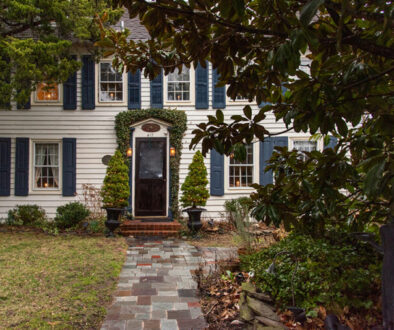Ruby-throated Hummingbird
You are walking down the street and a blur flashes past. What was that? That’s a fast insect. Then you come to your senses. It wasn’t a bee or other insect but a hummingbird. Being English (there are no hummingbirds in the Old World) they never cease to amaze me. Every April, the first males arrive back to set up their territory, ready to invite the missus back. She usually arrives a week or two later.
There is only one type of hummingbird that is regular in the east: the Ruby-throat. They are fairly common where there is plenty of food: suitable flowers for nectar, sugar-water, and an increasing number of insects when the other foods get harder to find.

When they arrive in spring, like most birds, they start building a nest immediately and can be on eggs within days. After all, birds don’t come to the beach to swan around like the rest of us, but to breed. It is the reason for their long migrations and everything else. Most of them winter in Central America and are already back on the Gulf Coast in Louisiana and Texas by late August or early September; the feeders there sometimes are having hundreds queuing up to get at the sugar-water. Things are less hectic in Cape May, though when all the offspring in July are fully grown, things tend to get more competitive.
The nest is usually built to balance right on top of horizontal tree branches, either on top of the branch, sometimes in the crook with one of the branches. The tiny nest, about three inches from side to side, the inside only two inches wide and an inch deep, is made of lichen and thistle down, moss, and is woven together with strands of spider silk and even pine resin. They are beautiful. To find one, try to look where the Ruby-throats in May and June are regularly going to. They are often trees you can walk under. Scour the tops of horizontal branches, often 10 to 20 feet up. Remember, they are tiny, like other gems are, but certainly worth the time looking for.
Pineapple Sage has always been a favorite plant for hummers and is probably an even bigger favorite with birders because they bloom into October and November, when vagrant hummers from western North America start to show up. Lots of flowers are popular through the summer. A sheltered garden with lots of plant diversity and insects always works well. Staying away from pesticides is also a game changer, for hummers and everything else that needs food to survive.
It only takes a week or 10 days to build the nest and a couple of weeks to incubate the two to three eggs. Within six weeks, youngsters can be flying around. They are similar to the female; all pale below and green above. If you get to see them closely, they have broad buff edges to all the upper-part feathers and often noticeably buff or pinkish flanks. As with all youngsters, once flying they are the same size and shape as the adults.

If you have hummingbird feeders up, it is great to watch them. Remember, one part sugar, four parts water; change it every few days in summer. They take it in turns to go to the feeder. When the portals are full, they wait, though I am not sure it is patiently. They are feisty, and particularly males will get very territorial and try to boss the feeder making it hard for others to come in, particularly if it is another adult male. They have their favorite portals and go to the same nearby branches after they have finished supping up. They often back off at the feeder as they position themselves; they are the only bird that can go backwards. Take some time to really work out what is going on and you will find their world fascinating. They are always busiest early and late in the day, tanking up before bed and needing breakfast in the morning.
Hummers need a lot of food. They take somewhere between 50 and 75 wing beats per second. Their wings never stop so they fly in a dead straight line. Woodpeckers have an undulating flight because they are always taking a break and so drop and then flap again to go up. Ruby-throats take 225 heartbeats a minute while resting and it goes up to 1250 beats a minute (two per second) when active. So, when you think you are going flat out, think of those hummers in your garden and make a special place for them with lots of food. They are certainly gems that probably bring more enjoyment to people than any other set of birds. There is nothing quite like them!



